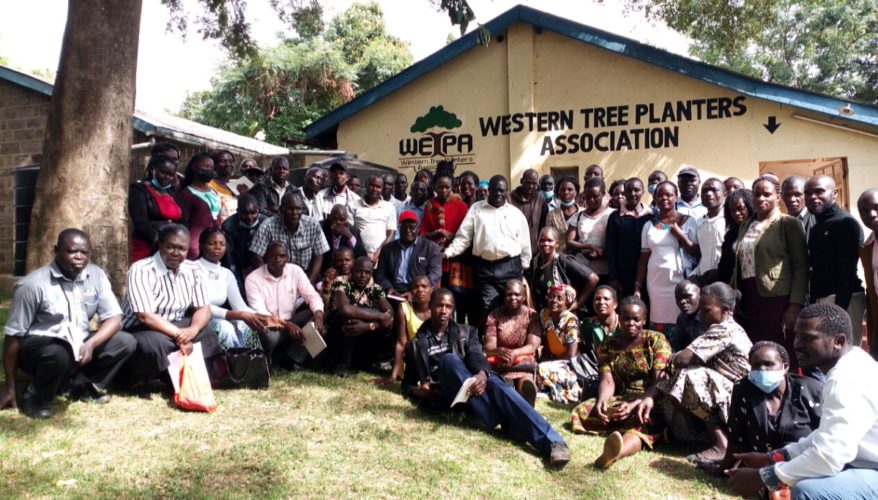According to Kenya Forestry Research Institute, Commercial forestry is contributing 3.8% of Kenya’s GDP, excluding charcoal and direct subsistence uses. This points to the need for a closer look at the sector by various stakeholders, even as the country seeks to achieve 10% forest cover. With commercial forestry supporting Kenya’s most productive sectors, including agriculture, fisheries, livestock, energy, wildlife, water, tourism and trade, smallholder farmers are undoubtedly key players in the sector.
Farm Forestry, therefore, has the potential of spurring commercial forestry by promoting tree planting amongst smallholder farmers as a source of income. This approach also helps combat climate change and also improve the livelihoods of farmers and vulnerable communities in the long run.
In Western Kenya, a region with significant agricultural and forestry potential, farmers have joined hands to form an association that can champion smallholder tree farmers’ rights and help drive their socio-economic development.
In 2006, Western Tree Planters Association (WETPA) was founded and has since united over 10,000 registered members drawn from Trans Nzoia, Busia, Bungoma, and Kakamega. One of the main activities of the Association’s members is tree planting on their farms and other supporting activities like tree nursery operations, beekeeping, poultry, seeds collection, village savings and loaning, among other income-generating activities.
WETPA has worked closely with VI Agroforestry, Food and agriculture organization of the United Nations (FAO), Farm Forestry Smallholder Producers Association of Kenya (FFSPAK), We Effect, Bungoma County Government and Kenya Forest Service (KFS), among others. These partners have supported WETPA’s growth over time to empower members who primarily plant trees for commercial purposes.
Currently, WETPA is undertaking trees on farm census project funded by FAO’s Forest and Farm Facility Programme. The tree census is informed by the need to have adequate data and statistics on the number, variety and age of trees planted by WETPA farmers. In the first phase, the exercise that covers Bungoma County will help develop a strategic business plan for the Association’s members in Bungoma County.
The first phase of the trees on farm inventory will be undertaken in Bungoma and will cover Cheptais, Kabuchai, Mt. Elgon, Bumula, and Webuye East sub-counties. The census exercise involves 44 enumerators trained by Kenya Forest Services (KFS) Inventory experts. WETPA targets to reach over 5,000 households spread across the 24 wards selected for the exercise.
“We are undertaking this tree census on our members’ farms to gather enough data for analysis that will inform WETPA’s 5 Year Strategic Business Plan. This will help us know the accurate value of trees planted by our members in selected sub-counties in Bungoma. We are now focused on tree growing as a business.” Boaz Kiboi, WETPA’s chairperson, explains.
Tree growing as a business is fast becoming the norm as farmers seek to diversify their sources of livelihoods. It is also a sustainable environmental conservation practice that meets private and public objectives, further deepening collaboration amongst smallholder farmers private and public sector stakeholders.
Photo: Tree census enumerators.


Comments are closed, but trackbacks and pingbacks are open.